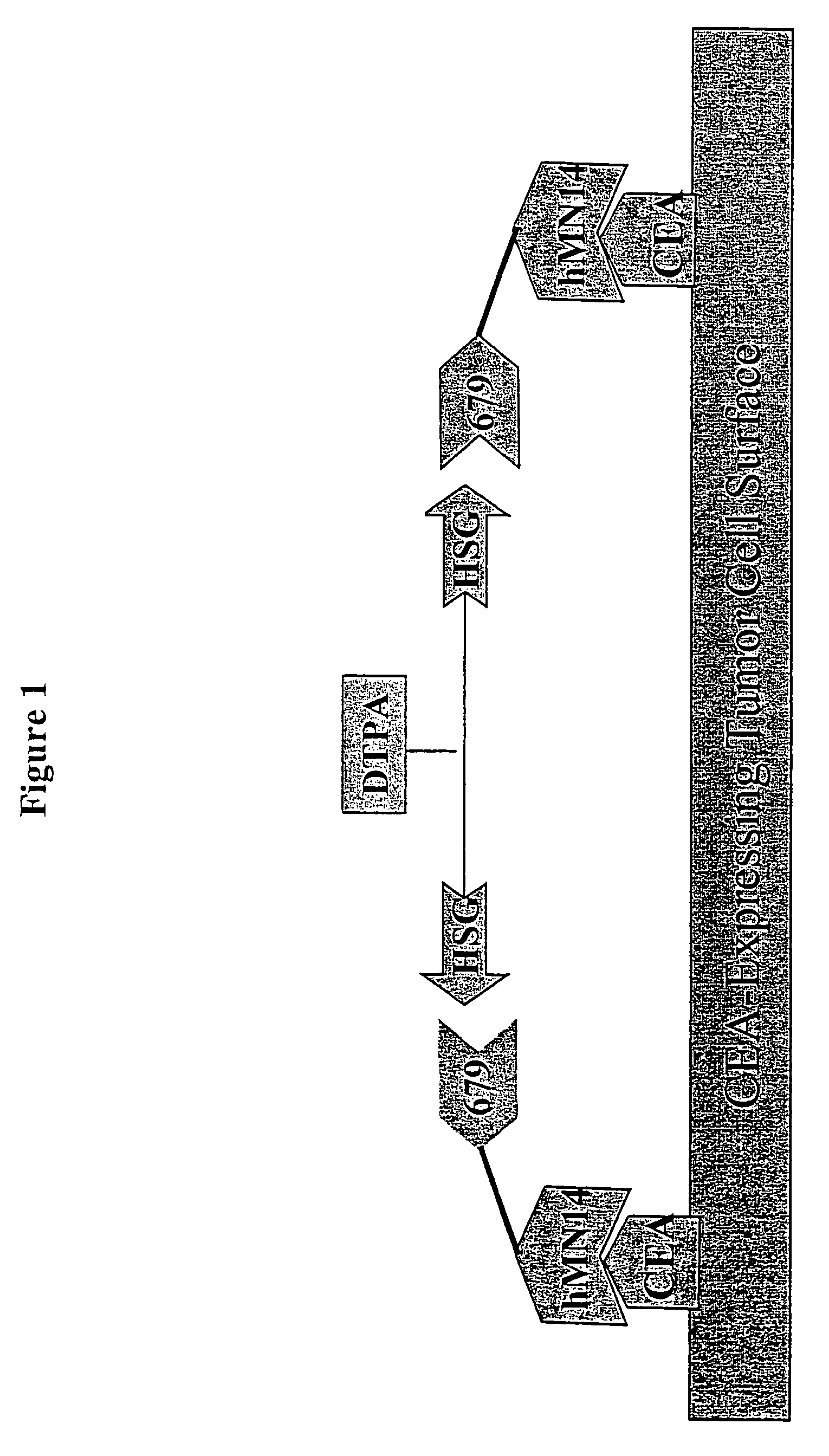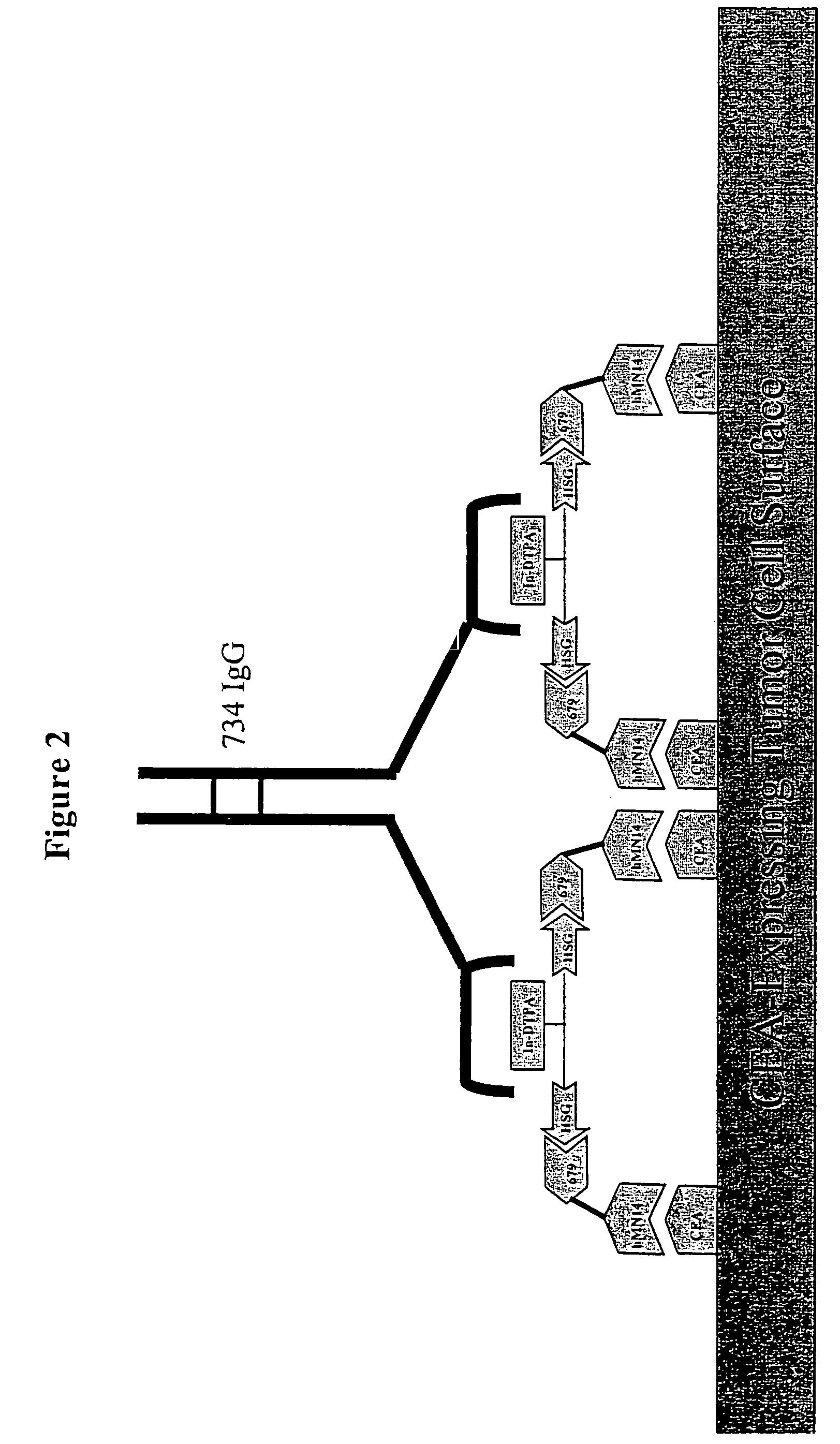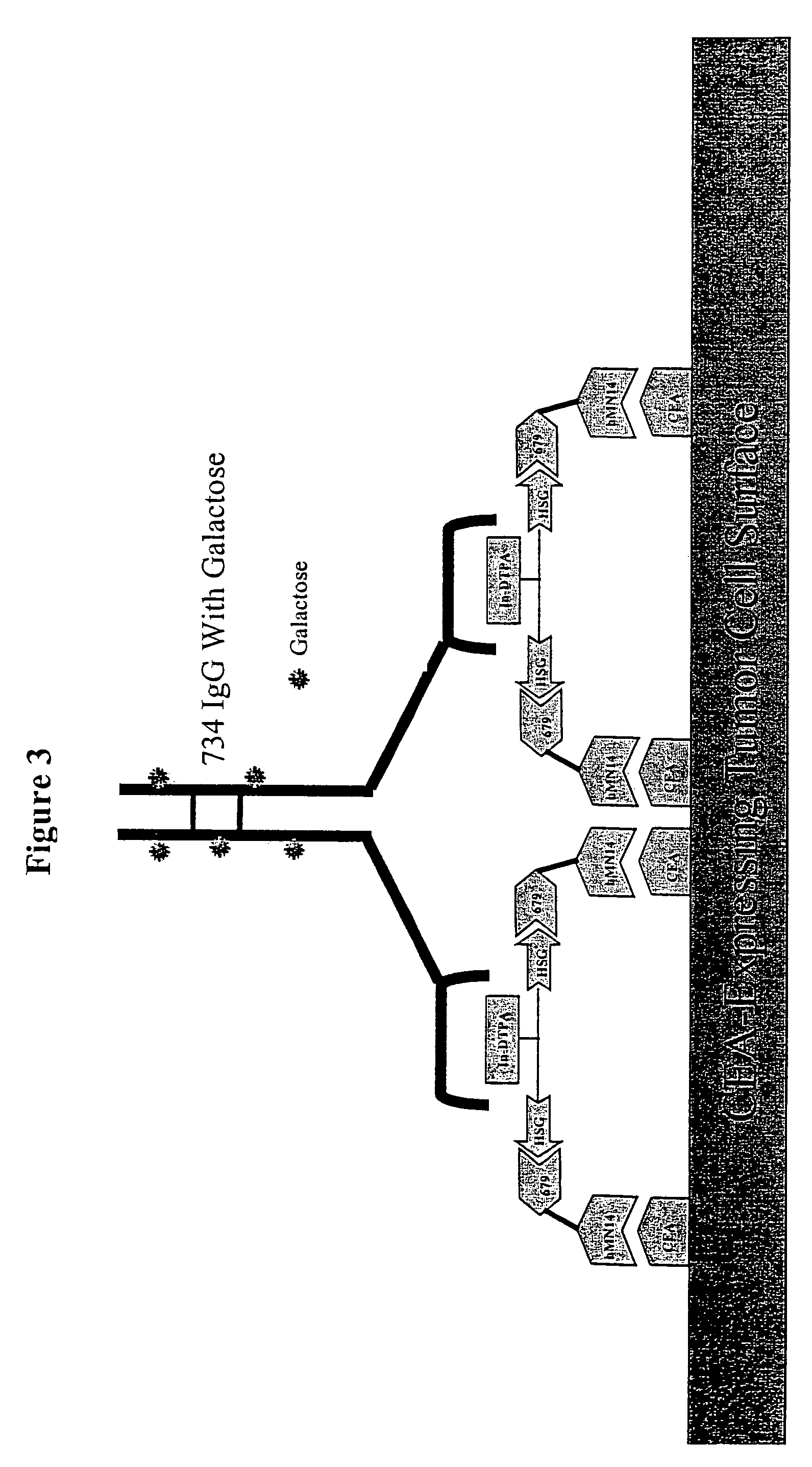Methods and compositions for administering therapeutic and diagnostic agents
a diagnostic agent and therapeutic technology, applied in the field of in-vivo administration of therapeutic and diagnostic agents, can solve the problems of inability to tolerate marrow toxicity, inability to detect marrow toxicity, and relative small fraction, and achieve the effects of increasing contrast, reducing the ratio of circulating targetable constructs, and increasing the clearance rate of circulating targets
- Summary
- Abstract
- Description
- Claims
- Application Information
AI Technical Summary
Benefits of technology
Problems solved by technology
Method used
Image
Examples
example 1
IMP 272 Synthesis, Antibody Binding, and Serum Stability
[0278]The exemplary peptide IMP 272 (shown below) was synthesized and labeled with 111In as described below.
DTPA-Gln-Ala-Lys(HSG)-D-Tyr-Lys(HSG)-NH2 (IMP 272, MH+: 1512)
Synthesis
[0279]The peptide was synthesized by solid phase peptide synthesis on Sieber Amide resin (0.424 g, 0.53 mmol / g) using the Fmoc procedure. The following amino acids (6 equivalents per coupling) were added in the order shown; Fmoc-Lys(Aloc)-OH, Fmoc-D-Tyr(OBut)-OH, Fmoc-Lys(Aloc)-OH, Fmoc-Ala-OH and Fmoc-Gln(Trt)-OH. Each amino acid was double coupled with two hour couplings, first using diisopropylcarbodiimide, followed by a coupling using O-Benzotriazole-N,N,N′,N′-tetramethyl-uronium-hexafluoro-phosphate (HBTU) as the activating agents.
[0280]The DTPA was assembled on the resin by removing the terminal Fmoc group from the glutamine, and reacting the N-terminal amino group with 0.866 g chloroacetic anhydride, 0.042 g DMAP, 1.76 mL DIEA and 5 mL NMP. The r...
example 2
Clearing of Targetable Construct Using Clearing Agent (Chase)
[0286]For particular constructs, the clearing (chase) component of the lock and chase method can be tested as described herein for the IMP 272 peptide. The peptide, IMP 272 DTPA-Gln-Ala-Lys(HSG)-D-Tyr-Lys(HSG)-NH2 MH+1512, was made for lock and chase bispecific antibody drug targeting. The peptide contains two HSG groups to bind to antibodies at the surface of a tumor in the normal pretargeting fashion. The peptide also carries a DTPA, which (when filled with indium) binds to the m734 antibody. The IgG has two binding arms for DTPA so it can bind to two peptides bound to the tumor surface. The extra cross linking at the tumor surface extends the amount of time that the peptide remains at the tumor site. The In-DTPA cross linking by a m734 IgG antibody provides the lock in the lock and chase antibody system. If the antibody is modified with galactose then it will clear more rapidly from the bloodstream than a non-galactosyl...
example 3
Testing of Lock Component of Lock and Chase
[0298]Similar to the testing of the chase component as in the preceding example, the lock aspect of the lock and chase method can also be tested. For example, the peptide, IMP 272 DTPA-Gln-AIa-Lys(HSG)-D-Tyr-Lys(HSG)-NH2 MH+ 1512, was made for lock and chase bispecific antibody drug targeting. As described above, the peptide contains two HSG groups to bind to bispecific antibodies at the surface of a tumor in the normal pretargeting fashion. The peptide also carries a DTPA, which (when filled with indium) binds to the m734 antibody. The IgG has two binding arms for DTPA, and so is capable of binding to two peptides bound to the tumor surface. The extra cross linking at the tumor surface extends the amount of time that the peptide remains at the tumor site. The In-DTPA cross linking by a m734 IgG antibody provides the lock in the lock and chase antibody system. This test utilizes 50 GW-39 tumor bearing nude mice, so 55 mice should be implant...
PUM
| Property | Measurement | Unit |
|---|---|---|
| molecular weight | aaaaa | aaaaa |
| molecular weight | aaaaa | aaaaa |
| molecular weight | aaaaa | aaaaa |
Abstract
Description
Claims
Application Information
 Login to View More
Login to View More - R&D
- Intellectual Property
- Life Sciences
- Materials
- Tech Scout
- Unparalleled Data Quality
- Higher Quality Content
- 60% Fewer Hallucinations
Browse by: Latest US Patents, China's latest patents, Technical Efficacy Thesaurus, Application Domain, Technology Topic, Popular Technical Reports.
© 2025 PatSnap. All rights reserved.Legal|Privacy policy|Modern Slavery Act Transparency Statement|Sitemap|About US| Contact US: help@patsnap.com



